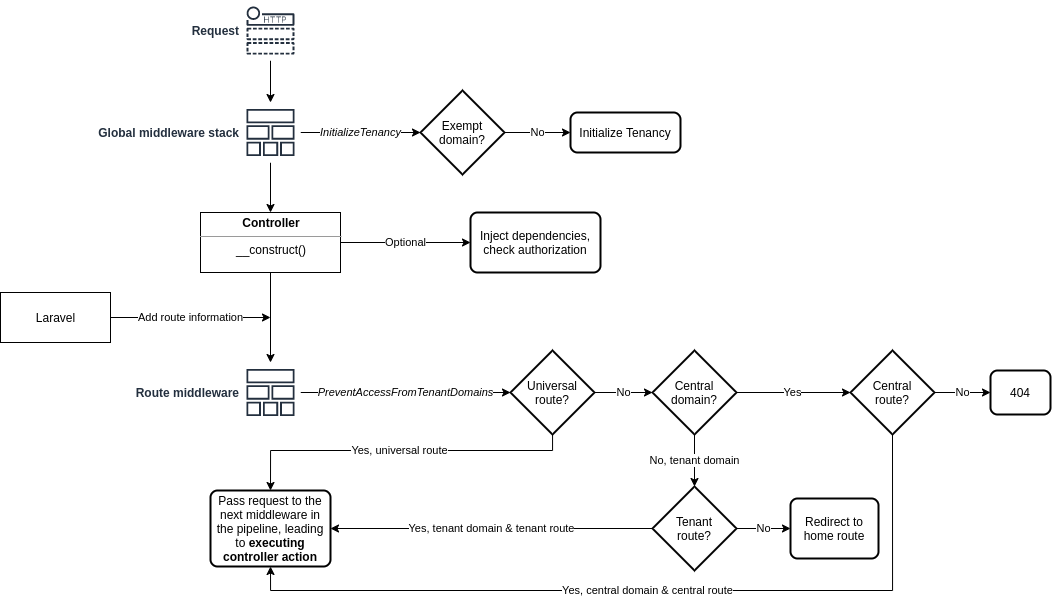Early identification
A slight "gotcha" with using the automatic approach to transition the application's context based on a route middleware is that route-level middleware is executed after controller constructors.
The implication of this is if you're using dependency injection to inject some services in the controller constructors, they will read from the central context, because route-level middleware hasn't initialized tenancy yet.
There are two ways to solve it, the former of which is preferable.
Not using constructor DI
You can inject dependencies in route actions, meaning: If you have a route that binds a Post model, you can still inject dependencies like this:
// Note that this is sort-of pseudocode. Notice the route action DI
// and just skim the rest :)
Route::get('/post/{post}/edit', 'PostController@edit');
class PostController
{
public function edit(Request $request, Post $post, Cloudinary $cloudinary)
{
if ($request->has('image')) {
$post->image_url = $cloudinary->store($request->file('image'));
}
}
}
If you don't like that because you access some dependency from many actions, consider creating a memoized method:
class PostController
{
protected Cloudinary $cloudinary;
protected cloudinary(): Cloudinary
{
// If you don't like the service location here, injecting Application
// in the controller constructor is one thing that's 100% safe.
return $this->cloudinary ??= app(Cloudinary::class);
}
public function edit(Request $request, Post $post)
{
if ($request->has('image')) {
$post->image_url = $this->cloudinary()->store(
$request->file('image')
);
}
}
}
Using a more complex middleware setup
Note: There's a new MW in v3 for preventing access from central domains. v2 was doing this a bit differently.
The manual for implementing this will come soon, for now you can look at how 2.x does this.
In short: The InitializeTenancy mw is part of the global middleware stack, which doesn't have access to route information, but is executed prior to controller constructors. The PreventAccessFromTenantDomains mw checks that we're vising a tenant route on a tenant domain, or a central route on a central domain — and if not, it aborts the request, either by 404 or by redirecting us to a home url on the tenant domain.
Here's the logic visually:

And here are the relevant files in 2.x codebase:
